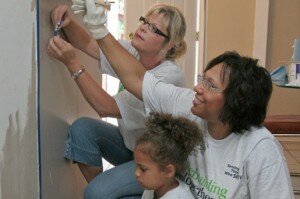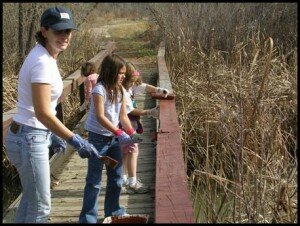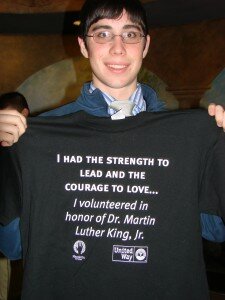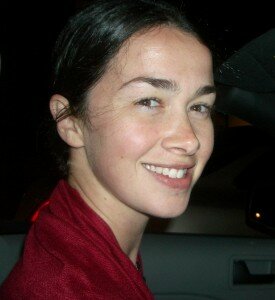Volunteer programs and initiatives that view residents as assets and seek to engage the local community as an equal partner by empowering, mobilizing and building upon its assets, are best positioned to facilitate sustainable positive change. Whether it is a short term group volunteer project or a long term community initiative, more and more people are becoming neighbors and developing programs that have lasting impact on the communities.
Following are the seven basic strategies that individuals, organizations, and businesses can use when working with under-resourced communities to strengthen families and transform neighborhoods.
1. Understand the language and nature of volunteering in tough communities – Learning the language is an important aspect of working in tough communities.Volunteers are abundant in tough neighborhoods and have a long history of helping, but residents do not usually refer to themselves as “volunteers.” Often called “helping out,” “giving back,” or “neighboring,” the volunteering that takes place is not usually recognized or rewarded and happens more informally through neighborhood associations, churches, and on an individual basis.
2. Overcome barriers to volunteering – Barriers to volunteering include lack of time, financial resources, child care, transportation, as well as low self-esteem and confidence, negative perceptions of volunteering or outside organizations, as well as cultural and language barriers.These must be addressed in order to engage local residents.
3. Empower the communities to help themselves – Residents must own the issues and solutions and must witness the benefit of their involvement in solving their communities’ social problems. Outsiders cannot be “parachuted” into the community to rescue the residents. Residents must be part of the planning and decision-making process.
4. Cultivate community members’ skills and talents – The gifts and talents of the local residents need to be identified and translated into important assets needed to accomplish a project’s goals. Many residents believe they have no talents or skills to bring to the table, but only by building on existing assets within the community can real change be affected.
5. Strengthen existing community leadership – Organizations should identify existing leaders and help develop new community leaders. Local leaders help build community trust and ensure that the local perspectives and experiences are considered and understood.
6. Acknowledge that volunteering is an exchange – All volunteers need to be rewarded for their contributions in ways that make sense and have meaning to them. In tough communities an appropriate exchange could include meals, services such as tutoring, child care subsidies, and job opportunities.
7. Ensure community readiness – Building relationships and involvement takes time. It is a process that needs patience and flexibility. Communities may need help resolving conflicts or problems that are preventing residents’ involvement.

 Without volunteers, most non-profit organizations would cease to exist or suffer a drastic reduction in capacity to serve communities and achieve the organization’s mission. Therefore, a refresher course in basic volunteer management is always in order! The way you plan your service projects will significantly affect the success of your volunteer recruitment. The best way to increase your volunteer base is to retain current volunteers; retention is simply a matter of making volunteers feel good about themselves and their service. Class is now convened! Read on for a few key volunteer management reminders.
Without volunteers, most non-profit organizations would cease to exist or suffer a drastic reduction in capacity to serve communities and achieve the organization’s mission. Therefore, a refresher course in basic volunteer management is always in order! The way you plan your service projects will significantly affect the success of your volunteer recruitment. The best way to increase your volunteer base is to retain current volunteers; retention is simply a matter of making volunteers feel good about themselves and their service. Class is now convened! Read on for a few key volunteer management reminders. Did you volunteer during
Did you volunteer during  es
es he Great American Bake Sale happens all across the country, all year long. Awesome youth and caring adults sign up to hold bake sales and send their profits to Share Our Strength. Share Our Strength uses that money to end childhood hunger. You can schedule your bake sale whenever you want, but the National Challenge is April 20-22. It would be sweet if your bake sale won! The first 300 bake sale hosts to submit $275 or more from bake sales held on National Challenge Weekend will receive a Jay at Play’s Little Miss Muffin Pop N Flip™ toy!
he Great American Bake Sale happens all across the country, all year long. Awesome youth and caring adults sign up to hold bake sales and send their profits to Share Our Strength. Share Our Strength uses that money to end childhood hunger. You can schedule your bake sale whenever you want, but the National Challenge is April 20-22. It would be sweet if your bake sale won! The first 300 bake sale hosts to submit $275 or more from bake sales held on National Challenge Weekend will receive a Jay at Play’s Little Miss Muffin Pop N Flip™ toy!




 person company. The
person company. The 


 at your local park will allow you to appreciate and preserve your local park.
at your local park will allow you to appreciate and preserve your local park.
 Today’s post comes from Alice Speck, a stay at home mom and education advocate in Washington, DC.
Today’s post comes from Alice Speck, a stay at home mom and education advocate in Washington, DC. We head off to school in the morning, and pass
We head off to school in the morning, and pass  We drive home from Whole Foods and again pass Shaw at Garnet-Patterson Middle School. They’re collecting shoes for the community.
We drive home from Whole Foods and again pass Shaw at Garnet-Patterson Middle School. They’re collecting shoes for the community.
 over the year’s most prized toys.
over the year’s most prized toys. a team of volunteers that donate various skills and ideas to the project. When planning a volunteering project consider who has participated in past volunteering experiences, who has expressed an interest, and who has demonstrated good leadership.
a team of volunteers that donate various skills and ideas to the project. When planning a volunteering project consider who has participated in past volunteering experiences, who has expressed an interest, and who has demonstrated good leadership.
 Volunteering your time and skills during the holidays will allow you time to reflect about how truly rewarding helping others in the community can be.
Volunteering your time and skills during the holidays will allow you time to reflect about how truly rewarding helping others in the community can be.
